Climate Games
Physical and Digital Games Around Climate Action
Mostly fun, but more importantly, games can be excellent, mind-blowing learning tools. In the list of climate games below, one can explore how to adapt one’s town to rising sea level via the board game, for instance. Further, these games are a good communication tool. Invite friends and family over to play and think at the same time.
Games
Art and gamification are useful strategies to communicate and help people approach and understand climate change and climate action. For instance, in 2021, CSteps was part of live Washington’s DC scavenger puzzle game “District Hunt” organized by Game Genius to feature environmental organizations, https://www.gamegenius.org/districthunt.” This brought attention – and members to Climate Steps – and actual climate steps.


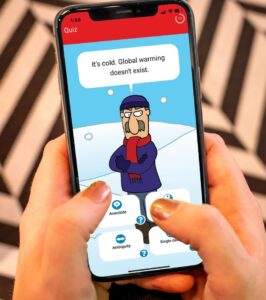






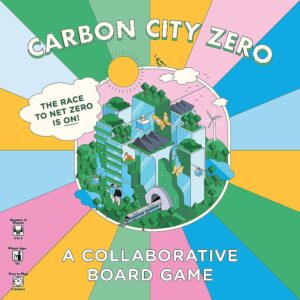

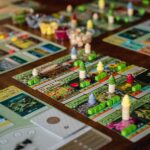




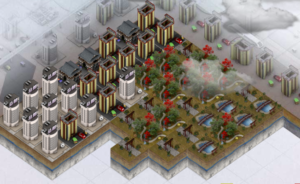




Climate Action Games
Note: A small school emoji 🏫 indicates the the game is intended for children.
App Games
- New Shores: a Game for Democracy, developed by the Centre for Systems Solutions (CRS) sets players on an imaginary island with a lush forest canopy over useful coal deposits that could improve the island’s economy. They can either collaborate democratically to achieve the best outcome for all, or serve their own needs, disregarding the welfare of the rest of the island’s inhabitants with attendant consequences.
- Cantor’s World, created by UNESCO MGIEP (United Nations Educational, Scientific and Cultural Organization and the Mahatma Gandhi Institute of Education for Peace and Sustainable Development) and Fields of View, requires players to act as countries’ chief policymakers, and to set sustainable development goals and then invest in policies to realize those goals. Players are able to see the results of their policies in Gross National Development, Human Development Index and Inclusive Wealth Index, and it focuses on Sustainability Goal #13, “Take urgent action to combat climate change and its impacts”. The game is intended to be played in universities by students of public policy, economics, and sustainability studies.As of 2023, this game is only available through universities.
- Climate Challenge is a Flash-based simulation game produced by the BBC and developed by Red Redemption Ltd. Players manage the economy and resources of the ‘European Nations’ as its president, while reducing emissions of CO2 to combat climate change and managing crises. Climate Challenge is an environmental serious game, designed to give players an understanding of the science behind climate change, as well as the options available to policy makers and the difficulties in their implementation.
- From the Cranky Uncle Website: “The Cranky Uncle game uses cartoons and critical thinking to fight misinformation. The game was developed by Monash University scientist John Cook, in collaboration with creative agency Goodbeast. The game is now available for free on iPhone, Android, and as a browser game.”
Bärbel Winkler of Skeptical Science notes: “To explain why and how some people reject scientific evidence, Cook created the character Cranky Uncle, the family member we all have who thinks he knows better than the world’s scientists.”
“A key solution to making the public more resilient against fake news is inoculation – avoid being misled by learning the techniques of denial….In the Cranky Uncle game, players are mentored by a cartoon personification of climate science denial. Cranky Uncle explains 14 techniques of science denial, from fake experts to cherry picking and a variety of different logical fallacies.”
Get your own cranky uncle to play with you!
Board Games
- Change the Game of Climate Change: A collaborative board game that can also be played via zoom; “for organizations and communities.” It is meant to be fun (with minions of destruction and you as the superhero) to fight the “heaviness” of the topic, so that people will actually play the game.
- CO2: scenarios, negotiations. – “each player is the CEO of an energy company responding to government requests for new, green power plants. The goal is to stop the increase of pollution, while meeting the rising demand for sustainable energy — and of course profiting from doing so,” says https://boardgamegeek.com/boardgame/72225/co. Potentially fun, but not oriented on action that individuals can take, and wonder who came up with this came. Must investigate.
- 🏫 Gaming for Justice from Mycelium Youth Network is kind of a board game and kind of a group game. The structure of the game is like Dungeons and Dragons, so there’s a board and dice, but there’s more to it. The video at the link above shows adults leading kids or acting out parts in a story that the kids are characters in. Not all of the stories that this organization has created are related to climate change: one, for example, was about police brutality. However, in each scenario, kids take direct action to solve fantasized community problems based on actual issues.
- 🏫 Go Goals!, created by United Nations Regional Information Centre for Western Europe, is a board game available in multiple languages and intended to help children understand the United Nations’ Sustainable Development Goals.
- 🏫 In the board game Minions of Disruption, a board game developed by Shu Liang, the founder and director of Day of Adaptation, players are colleagues in organizations or neighbors from the same community combating climate minions, Carbions and Climmies, that cause climate change. Players cooperate to activate Zillians, superheros who provide organizations with resilience for a sustainable future.
- The Stabilization Wedge Game, or what is commonly referred to as simply the “wedge game”, is a serious game produced by Princeton University‘s Carbon Mitigation Initiative. The goal of the game creators, Stephen W. Pacala and Robert H. Socolow, is to demonstrate that global warming is a problem which can be solved by implementing today’s technologies to reduce CO2 emissions. The object of the game is to keep the next fifty years of CO2 emissions flat, using seven wedges from a variety of different strategies which fit into the stabilization triangle.
- The Energy Transition Game, intended for a wide range of stakeholders, from financial institutions and government officials to non-government organizations and community members, takes players through the process of developing a transition from fossil fuels to renewable energy in spite of resistance against such change.
Card Games
- Invest in the Future, based on the Flexible Forward-thinking Decision-Making game originally designed by Antidote Games and developed with the Red Cross Red Crescent Climate Centre for the Africa Climate Change Resilience Alliance for use with district planners, is a card game combining strategy and story-telling to inspire players to consider climate change as they make sustainable investment choices. It has been redesigned as an experiential learning game for young people in Southeast Asia by the enGAgeMEnt Lab at Emerson College, in collaboration with the Red Cross Red Crescent Climate Centre.
- Carbon City Zero is a global warming game published by the climate action charity Possible in January 2021.The game is a collaborative deck-building card game for 1-4 people in which players take on the role of city mayors working to develop sustainable cities by greening transport, transforming industries, and getting their citizens on board. Since its release on Kickstarter, the game has been made available as a free print-and-play download via PnP Arcade and as an online game on Tabletopia.
- Megawatt Deck: a card game that challenges you to build an electric grid.
- The World’s Future, developed by the Centre for Systems Solutions (CRS) and the International Institute for Applied Systems Analysis (IIASA), is a card-driven board game intended for everyone from public administrators and members of non-governmental organizations to youths. Players consider tradeoffs, such as whether it’s possible to provide food for all without exceeding the boundaries of natural ecosystems, or how we might increase climate change mitigation while generating enough energy to meet everyone’s basic essential needs.
Group Games (No board, no video, no app, just people)
- Climate Adaptation Game was developed by Swedish National Knowledge Center for Climate Change Adaptation and Linköping University. In a review published by the Multidisciplinary Digital Publishing Institute, the authors wrote that “aims to provide an experience of the impact of climate adaptation measures, and illustrates links with selected Agenda 2030 goals, which the player has to consider, while limiting impacts of hazardous climate events. The game design builds on the key goals in Education for Sustainable Development combining comprehensive views, action competence, learner engagement and pluralism. This study draws on game sessions and surveys with high school students in Sweden, and aims to assess to what extent different aspects of the game can support an increased understanding of the needs and benefits of adaptation actions.”
Online/Browser Games
- Road to 10 Gigatons, a carbon removal game. Once (and during) we stop putting carbon in the air, we are going to need to draw it out, often called drawdown. This is a simple, one-page game, where you move the marker on different types of carbon removal systems, to see what gets you to 10 Gigatons by 2050, the recommendation by IPCC. Try it out. It takes 10 minutes to see what they have predicted is the sweet spot.
- The PHUSICOS NBS (Nature Based Solutions) simulation is intended for a variety of users, including educators, sustainability experts, public administrators, and members of local communities, and it simulates how nature-based solutions may be developed by stakeholders with varying interests and worldviews. Role playing requires players to consider climate change issues from other stakeholder’s viewpoints.
- Survive the Century is a “branching narrative game about the political, environmental and social choices humans will face between 2021 and 2100 as we adapt to the ravages of climate change. This game is a work of fiction, but it is informed by real science.” (https://www.climateinteractive.org)
- Like Climate Action Simulation, The Climate Game, involves top-down policies – the ones you instigate cost you points, and the you see if they worked or not and get rewards if they do. This simulation is done with the Financial Times. We made some pretty hard choices, but still the Antarctic Ice Sheet fell off.
- Urban Climate Architect, created by the Hamburg University Cluster of Excellence CliSAP, is an online climate game specific to the challenges of urban settings. Players can develop the city, adding buildings for residence, commerce and industry as well as natural spaces like parks and ponds while noting the effects such changes have on the city’s climate.
- The World Climate Simulation game from Climate Interactive, the MIT Sloan Sustainability Initiative, and the UMass Lowell Climate Change Initiative, is an in-person role-playing exercise of the UN climate change negotiations. Participants learn how nations can address global climate change with the help of Climate Interactive’s C-ROADS simulator, which allows users to analyze the results of the game.
Quizzes
- CNN published a quiz from Project Drawdown that allows you to test your knowledge about effective climate change solutions, and “Actions are labeled to indicate whether they can be implemented by individuals, companies or policymakers.” For example, the quiz on food asks players to rank these choices from most to least effective:
— Cook over clean stoves
— Compost your waste
— Throw away less food
— Eat a plant-heavy diet
So what do you think? Which steps would be most or least effective? Head over to the quiz to see if you’re right!
Video console Games
The Xbox 360 Games for Change Challenge is a collaborative effort between Microsoft and Games for Change (G4C), a subgroup of the Serious Games Initiative. The challenge is a worldwide competition to develop a global warming game with Microsoft’s XNA Game Studio Express software. Winners will be awarded scholarships from Games for Change and Microsoft, and the winning games will have the possibility of being available for download on the Xbox Live Arcade service. The Xbox 360 Games for Change Challenge has been cast by Microsoft as a “socially-minded” initiative, joining the larger serious games movement.
And video games and virtual reality definitely are here – and in the future about the environment and the climate. For instance, as CSteps Facebook member Alex notes:
- “Sonic the Hedgehog 1 and 2 is all about saving forest creatures from being horrifically turned into robots, while Ori and the Blind Forest is a game where a forest starts dying leading to famine and Ori unlocks that she has powers to breathe life back into the forests and save the wildlife there.
-
Final Fantasy 7 has a big monopolized electric company harvesting life energy from the planet itself to power the cities and stuff and you spend the first few levels trying to blow up reactors to slow down the damage they’re doing to the planet.”
But unless one is playing with a climate denier and wins this person over to become a climate activist (not an eco-terrorist!), these games don’t actually do anything to prevent carbon emissions int he air – in fact, playing them draws a lot of energy.
Something more constructive is the course featured in the left image that unfortunately is no longer offered by the Museum of Design Atlanta (MODA), but something similar should be.
According to Boston University’s report “Games for a New Climate: Experiencing the Complexity of Future Risks,” “Well-designed games, like risk management measures, involve decisions with consequences…. While games can never fully capture the complexity of climate risk management decisions, through gameplay these complexities can be revealed, discussed, and processed. Through games we can learn how systems work, and the game-based system rewards us as we learn…. Players inhabit, enliven and interpret these systems through play, and are compelled to learn how a game works for the sake of pleasure, discovery, competition and just plain “fun.” Games can train us to take a longer view, to practice complex thinking, to examine problem-solving strategies at multiple levels of even planetary scale…, and to prepare for targeted action when future need arises.”
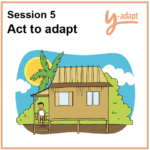


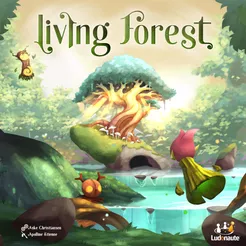





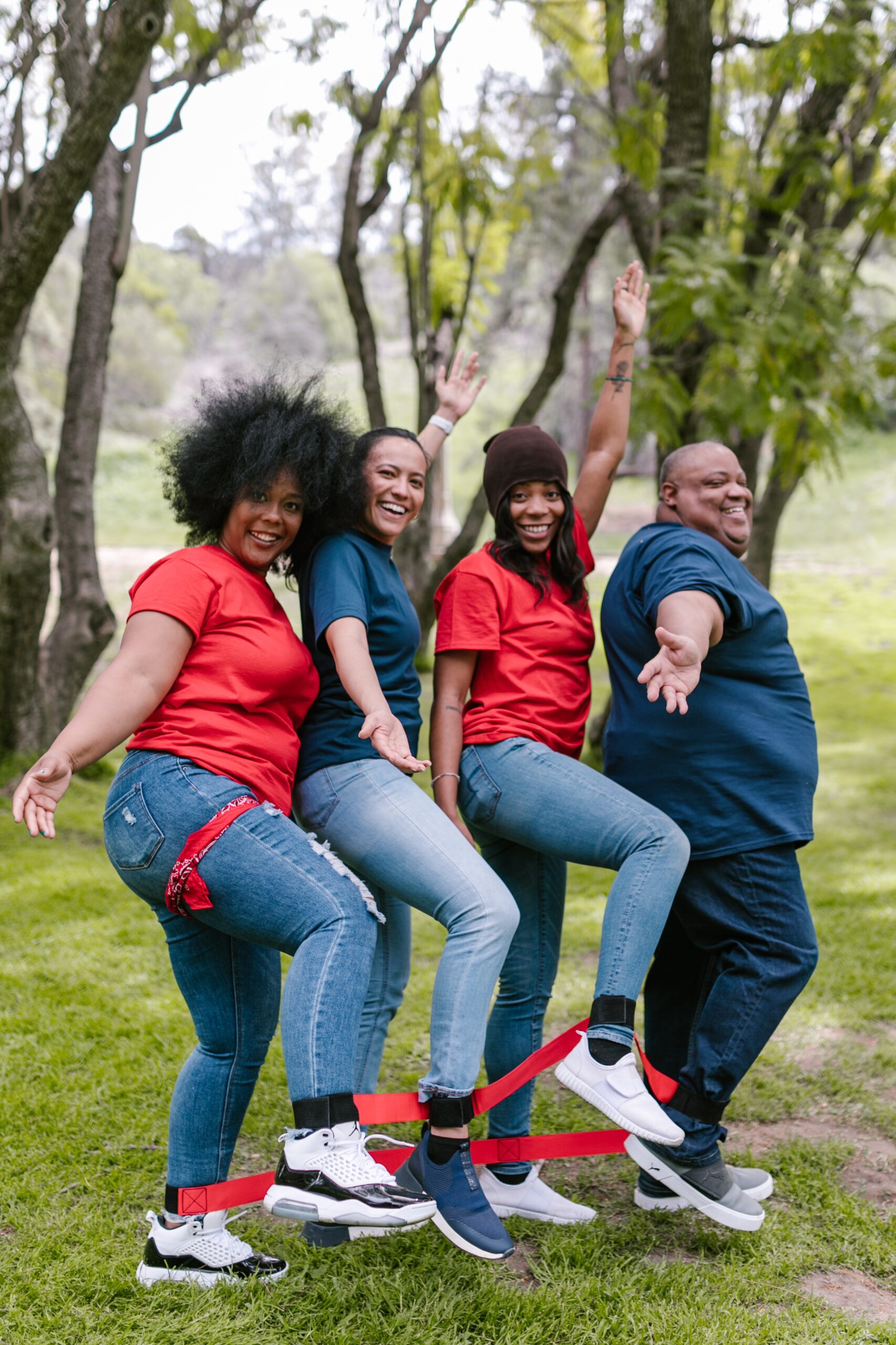


Environmental Games
Note: A small school emoji 🏫 indicates the the game is intended for children.
Board Games
- 🏫 Act to Adapt is a giant board game requiring the community team to prioritize community resources that may be vulnerable to extreme weather and then take actions to protect those resources from being destroyed by the hazard team.
- Adaptation board game from Adaptation Scotland is, as the name suggests, a board game for teams of people using dice to move around the board, landing on squares which either cost money or save money due to destructive weather and adaptation investments. At the end of the game, the team with the most money wins. Adaptation Scotland would like players to play after experiencing their “Introduction to Adaptation” presentation, which is regularly updated. Interested parties can request the most recent version by emailing Adaptation Scotland.
- 🏫 Keep Cool is a board game created by the Potsdam Institute for Climate Impact Research and published by the German company Spieltrieb in November 2004. Up to six players representing the world’s countries compete to balance their own economic interests and the world’s climate in a game of negotiation. The goal of the game as stated by the authors is to “promote the general knowledge on climate change and the understanding of difficulties and obstacles, and “to make it available for a board game and still retain the major elements and processes.” A quantitative-empirical study with more than 200 students shows that Keep Cool facilitates experimental learning about climate change and helps “to develop individual beliefs about sustainable development by experiencing complex system dynamics that are not tangible in everyday life.”
- The Living Forest game, a winner of the Kennerspiel des Jahres 2022 award, is a “deck-building game tasks players with protecting a sacred wood from fires that threaten to overwhelm them.” Not sure how they protect the wood except it appears that magic is involved, but other actions as well. This site says “It’s a delightful strategy that’ll appeal to both families and hardcore board gamers.” I have the feeling it’s not really tied to true climate steps.
- 🏫 Rescue Polar Bears. It is what it says it is, but as the author of Dayad’s game above says, the game “is distant” in time (2045) and place (Arctic.)
- The Game of Extremes, developed by the Urban Sustainability Director’s Network, requires players to take on a variety of roles and work with other stakeholders to respond to crises of flooding and extreme heat. This game, along with The Game of Floods and The Game of Heat (basically the same game, but limiting the crises to one of these two effects of climate change instead of both), are well-thought-out role-playing games, free for download and printing and using at events, your home, your organization, and more.CSteps Founder Dr. Annette Olson had a chance to play the Game of Extremes four years ago, hosted by the Audubon Naturalist Society (ANS) here in DC. Here’s how she described this game, which took a look at the effect of climate change on the future of Muggytown:”Roles people played included various city planners and other stakeholders who focused on preventing and mitigating the pacts of flooding, storms, and heat extremes due to climate change. Our group of characters first ranked our assets (like hospitals, the dam) by exposure, sensitive, and adaptability. I was the Emergency Preparedness Manager, but I didn’t have the funding to do my job. Then our group had to work against the clock to apply our budget (ha!) to save our assets and fight extreme heat. For instance, the power plant near the dam was vulnerable to river flooding, and storm surges, and extreme heat. One of my comments during the day on social media: “Buying sandbags for the dam costs a hell of a lot of money.” The game was interesting and somewhat fun, but also stressful. The moral of the game is – we need time for long-term planning. As one of the organizers said, “This is a game where there is no end, there is no win in climate change.” [at least not in several generations.] It’s about how to deal with messy stuff, chaos, different parties, and different views. The point is to experience that frustration, and the need to quantify and plan for problems.”Get a group of eight or nine or ten, and run through it. Or get an organization to host, like ANS did for us.
Citizen Science Games
This is one that is just amazing because it has clear, direct impact on climate science. In order to fight climate change, we must do the science. For weather, for inputting historical records relating to climate, for social studies to help predict human behavior, and for species ecology and distribution so we can predict their future.
And how can you help? By gaming as an assistant on a science project. Your gaming can help scientists discover different scenarios and pathways. Your getting your friends involved can accelerate it further, while changing them into rabid environmentalists.
(Disclaimer, Annette Olson briefly worked on contract in 2019 for SciStarter.com).
- Cascadia, a seemingly simple but actually complex puzzle board game where you try to fit animal and terrain tiles into ecosystems and see what survives, just won the (at least in board game crazy Germany, says a colleague) prestigious “Spiel des Jahres” (Game of the Year) 2022 prize. Created by Randy Flynn and produced by Flatout Games/AEG/Kosmos; https://www.flatout.games/cascadia/. I haven’t played it yet, but what would be interesting is if it had a component where the world heats up. What happens to the species then?
- CrowdWater game, which is based on data from the CrowdWater app., comes from the Hydrology and Climate group (H2K) within the Department of Geography at the University of Zurich.
App users contribute photos of water levels worldwide. Photo pairs from the same site can then be compared to each other in the CrowdWater game to verify the incoming data and to improve the quality of water level time series. Players can earn points, and every month they can win prizes. - QuestaGame is a free game in which players can submit sightings of local flora and fauna for research purposes. Players can join and create quests, earn points, join clans/teams, compete against other players. The game accepts both online and offline sightings, and includes data on over a million species. Sightings are geo-tagged with location, date and time, so if players allow the game to share the data, they’re helping researchers record and protect local biodiversity.
Group Games (No board, no video, no app, just people)
- Developed by The Minimalists Joshua Fields Millburn and Ryan Nicodemus, The 30-Day Minimalism Game requires two or more people to minimize their belongings over the course of a month. Each person gets rid of one thing on the first day of the month, two things on the second, three things on the third, and so on. The material possession must be the home by midnight each day. The winner is whoever keeps it going the longest wins.
- Dissolving Disasters was developed with support from the American Red Cross (International Services Team). Played in an open, rectangular space where players have room to walk, participants act as subsistence farmers facing changing risks due to climate change.
- Gender and Climate Game is an experiential learning and communication game for teaching the different vulnerabilities of women and men facing climate change. Players first take on the role of subsistence farmers facing changing risks, and then experience how that role changes with a change of gender.
- 🏫 The Greenhouse Gas Game is part of the Y-adapt curriculum intended to help children understand climate change. Players act as either incoming sunlight heat or as greenhouse gasses to learn how those gasses trap heat, and how that is related to global warming, as well as the hazardous effects of global warming.
- Master that Disaster was developed in collaboration with the United Nations Food and Agriculture Organization, based on a disaster risk financing game created for the World Bank Disaster Risk Financing and Insurance (DRFI) Program. Players take the role of subsistence farmers, who face changing risks as a result of climate change. They must make individual and collective decisions, with consequences. The game is intended for disaster managers, policy makers, and donors, and it should be played in a large room with tables and chairs.
- In the Paying for Predictions game, players act as humanitarian workers facing changing climate risks and making individual and collective decisions with consequences. Players can win as individuals or groups: the individual winner has the most resources remaining at the end of the game, and the group winner has the fewest humanitarian crises.
The game is intended for a range of professions: disaster managers, volunteers, branch officers, meteorological service authorities, donors, etc. - 🏫 In the game Race for Risk Reduction, which is available through the Red Cross Red Crescent Climate Centre, two teams of players test their ability to respond to crises using existing opportunities to explore decision making under pressure and involving complications.
- Shocks and Shields was modified by The Red Cross Red Crescent Climate Centre from an activity introduced by the Applied Improvisation Network. Players experience having to migrate following climate shocks, and the game is intended to create a sense of bonding among participants.
Online/Browser Games
- 🏫 Coral Bleaching is a simple online game for young children. Players can experiment with the effects of changing the temperature, level of pollution and storms on bleaching coral.
- Crabby’s Reef is a classic arcade-style game created at SeriousGeoGames Lab in the Energy and Environment Institute at the University of Hull, UK. Players search for food and avoid predators. As they advance, they move into a future where increasing ocean acidity makes survival more difficult.
Virtual and Extended Reality Games
- Tree: An XR game by New Reality Company. See https://www.gamesforchange.org/games/tree/ for a beautiful short video and further explanation about the growth, and logging of the Tree.

Teasers and Illusions
This visual teaser was developed by Alekz London and shared on social media, catching peoples’ eyes across the social sphere and sending a message. (working on permission to share.)
This is a teaser you can create yourself and send around, saying, oh, I don’t know, Climate Steps, for instance. 🙂
Note: Some of these game descriptions are from Wikipedia’s Global Warming Games, written by Wikipedia editor James2c19v.
Contributors: Annette Olson, Mark Stewart, Alex Bryson, Jeordin Callister, Jaime Hicks, Sven Bendel
